
Day one in Lima was a city tour, which wasn’t Miraflores, the coastal area our hotel was located in (view pictured above), but in old town with it’s historic, elegant, and mostly abandoned buildings. Our first stop was the Grand Hotel Bolivar on Plaza San Martin, which is apparently still a functioning hotel (barely). It had the golden-age neocolonial kind of vibe to it, with arched ceilings, glass domed lobby, remarkable carpets, furnishings, chandeliers, stained glass windows and mirrors.
|
|
|
|
|
|
Next we walked down Plazuela de la Merced, where it became more
obvious that the heyday of this area had passed. Stopping at the
Basilica and Convent of Nuestra Señora de la Merced (which, like many of the places we visited, looked
ancient but had one or more facelifts during it’s history) and enjoyed
seeing the ornate but impressive alter and side-bar sections.

|
|
|
|
|
|
After passing not a Starbucks (which are in every country we’ve ever visited) but a Dunkin’ Donuts, we entered Plaza Mayor, bordered by the Catedral de Lima, the final resting place of the Conquistador Don Francisco Pizarra.
Pizarra had a colorful and brutally violent history that ended with an execution by his countrymen, with his remains deposited in a secret location in the Catedral, only to be discovered a hundred years later. “Discovered” in this case meant “we found some bones while digging around the property,” and they were proudly put on display for the next 300 years, until someone found other bones minus a head. Oh, and a sealed metal box bearing the words “This is the head of Don Franscisco Pizzara.”
Whoops.
So now the real, DNA authenticated remains are on display in a
separate side cubby of the church.
One interesting thing is that unlike the Cathedrals and churches in Quito, Ecuador, which were heavy on carving and gold gilt, the Lima religious sites used sophisticated tile work. Also kind of interesting is that the traditional painted walls with romanticist renditioning of bleeding jesus on the cross and other holy events had mostly been covered over with white stucco. There were quite a few side cubbies with their own ornate alters, several of which had secret hatches (which have since been uncovered, so not so secret anymore) down to burial crypts for the rich patrons who were trying to buy their way into heaven. Kind of fun was that when they were opened and made accessible, the bones (and there were a lot of people that seemed to be somewhat unceremoniously dumped into pits with prior deceased patrons) where left on display. Made for a bizarre but fascinating peak into the past. The Spanish seemed to have some kind of bone-as-art bias as they would do things like embed skulls in ornate display cases and put them on display on the alter.
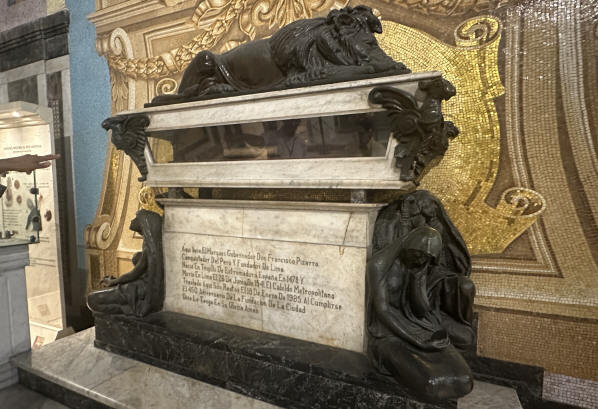 |
|
Also kind of interesting that the Cathedral (and surrounding buildings) were infested with Black Wing and Turkey Vultures instead of pigeons.
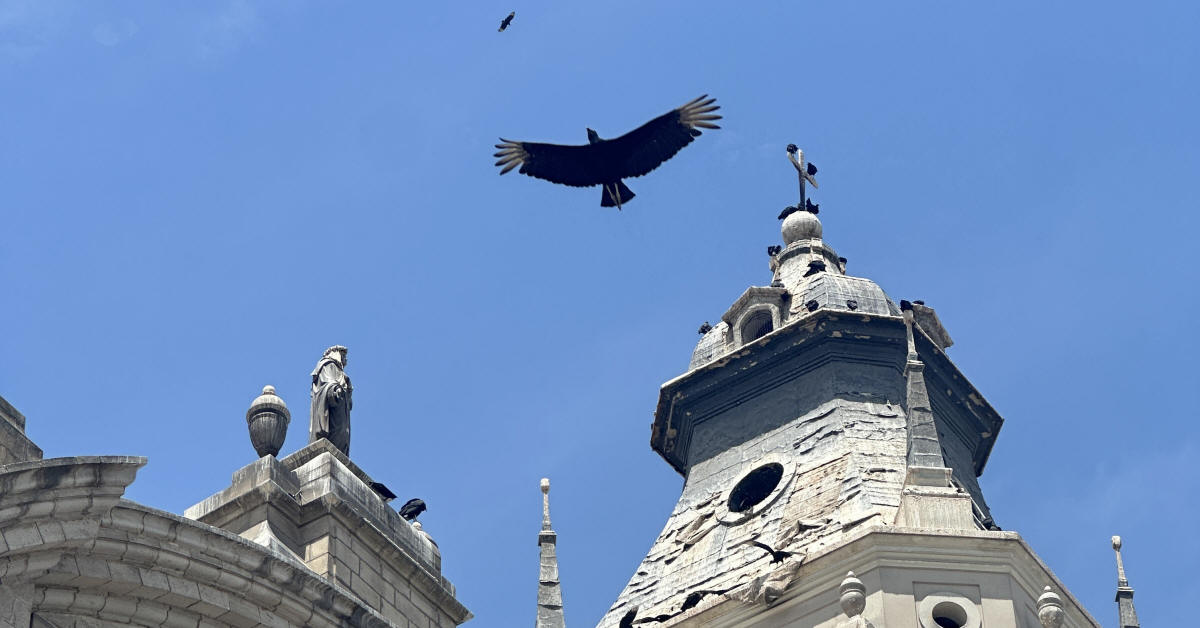
We then walked by the Parliament Center, where a large contingent of pikemen were marching around with twelve-foot-long pikes for no obvious reason.

Then on to the Basilica and Convent of San Francisco, which is more or less a tourist attraction that makes money for the Franciscan Monks who live in a section of the Cathedral you’re not allowed into. You are not supposed to take pictures anywhere, even in the “Disneyland” tourist section, which meant I only took a few surreptitious shots when I was sure no one was looking and we were out of the line of sight of the many security cameras adorning different walls.
We were again struck by the tilework and that the walls had the original art covered by stucco (although here, they were trying to remove it a section at a time).
This particular sect / Church took great pride for a long time in allowing people to be closer to god after they die by having their bodies thrown in giant charnel pits under the church proper, and I mean cylindrical pits piled ten feet deep in bodies. To be a bit more precise, the bodies where drawn in death-head carriages, taken down into the catacombs and placed with great ceremony in simple but spacious crypts. And then taken a couple of months later and thrown into the charnel pits to make room for the next set of bodies. It was all marvelously creepy.

We stopped for a lunch with “Inka Kola” and pork sandwiches; the Inka Kola tasted like cream soda and the pork sandwiches tasted like pork sandwiches.
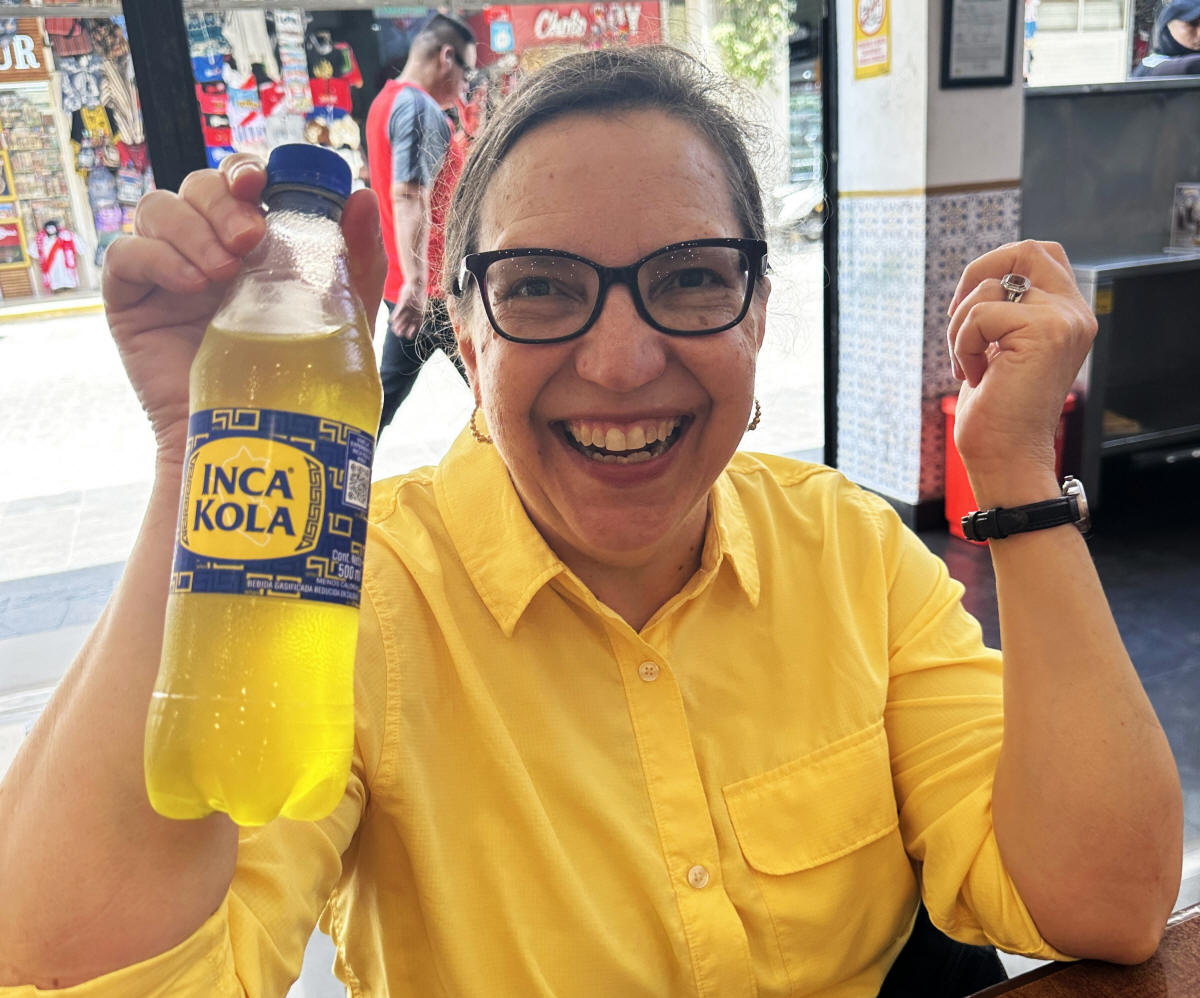
Next was a visit to the Larco, the former residence-turned-museum of Ralph Larco Hoyle, businessman and amateur Archeologist (but, as it turned out, much more of an Archeologist than Hiram Bingham, the Harvard Professor that lead the expedition to ransack … I mean, restore … Machu Picchu in 1911). The Larco was AMAZING; the pieces so perfectly preserved, so elegantly displayed, and so artfully made that we could have spent a day there. There were little tidbits of “you need to unlearn what you know,” like the fact that the majority of the gold and silver Spain took from South America was actually mined, not recovered from Inca treasure. There was also an “adult only” section that had “erotic pottery” that was perhaps inappropriate for younger family members.
|
|
|
|
|
|
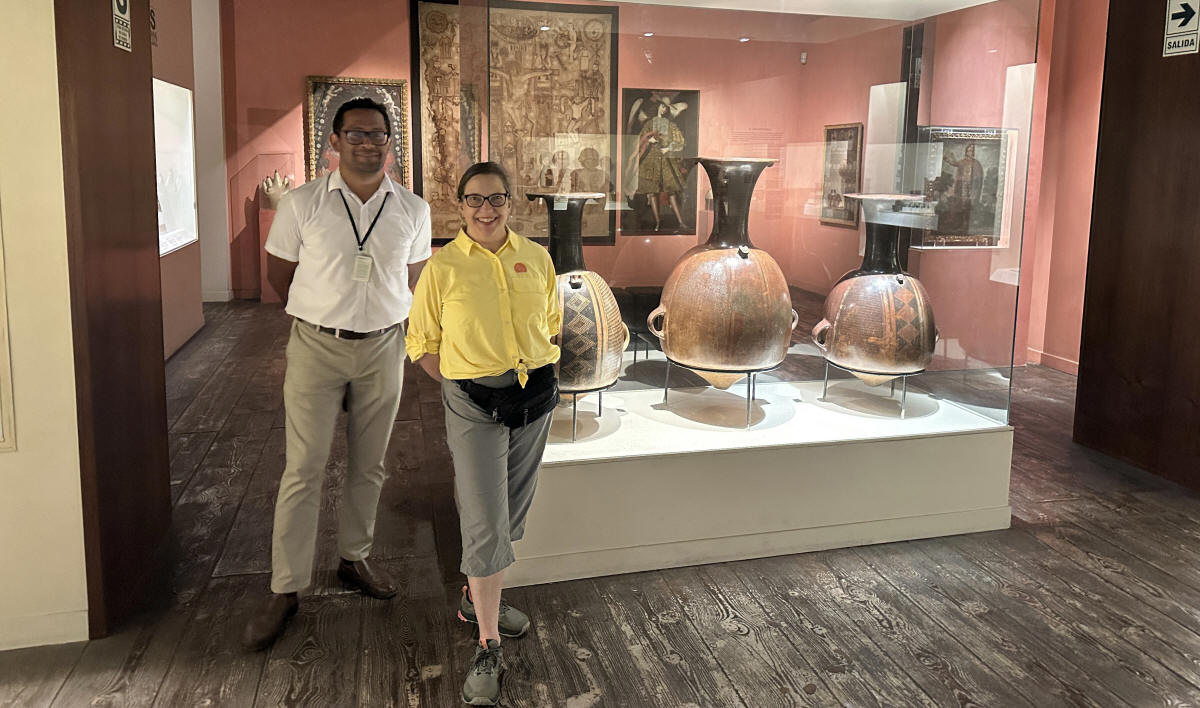
After returning to the hotel, we walked about a mile into Lima for dinner. There was a small, free display of modern art (the Palacio de las Artes de Miraflores or "PLAM"), the inevitable we-find-one-in-every-city Irish pub, a board game store (with Spanish versions of common board games), street art, and a variety of other eye-catching things to see.
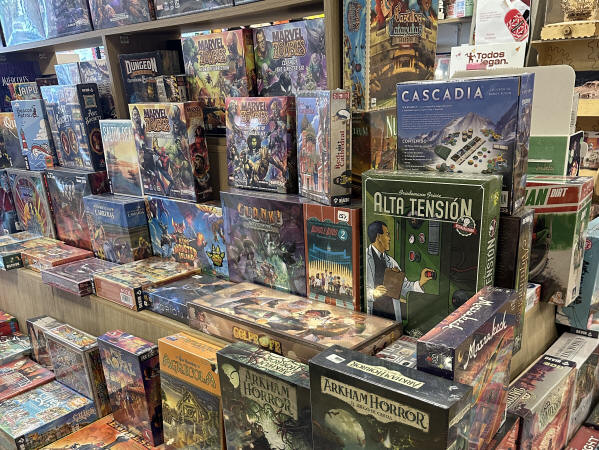 |
But our real goal (besides dinner) was to visit Parque Kennedy (as in "John F. Kennedy) – otherwise known as the cat park of Lima. We heard about it (someone said "there's a lot of cats") but were not really prepared for the fact that it really is a cat park; they have little kitty apartment buildings and water and food bowls set out for the litterally hundreds of cats wandering around.
Day 2 was a “free day” where we could do what we wanted, so we headed to the MALI museum (Museo de Arte de Lima), located in the Exposition Park, at the entrance of Lima's historic center. There they display 3000 years of art in chronological order, with a slow progression of ancient pottery and textiles (where again we were impressed with how well preserved the thousand plus year old textiles were), the rather abrupt transition to Spanish colonial art, and finally into modern pieces.
 |
|
|
|
|
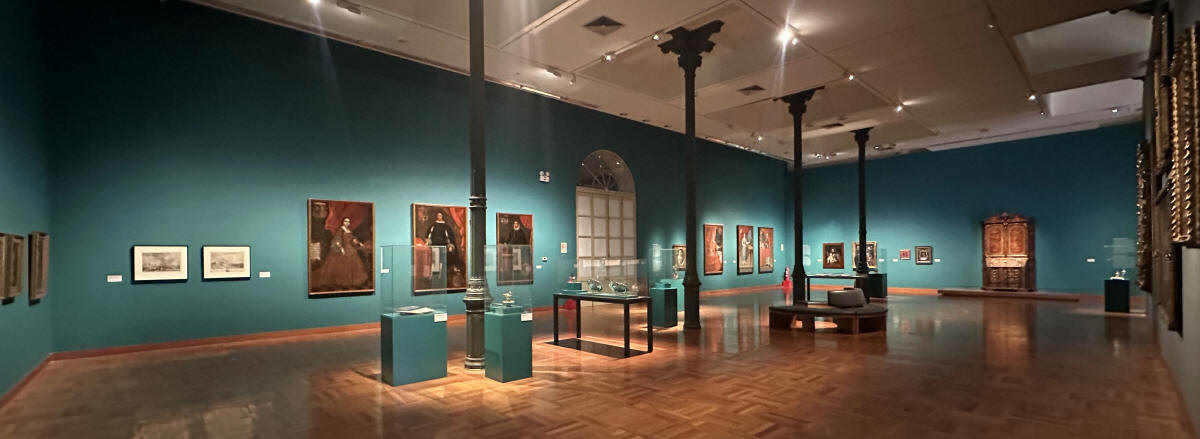
That ended up taking more time than expected because we were caught in huge traffic jams coming and going, so after returning to the hotel we did some shopping in the shopping mall built into the cliffs across the way from our hotel, and had dinner at a place called “Popular” that served simple dishes and (as it turned out about 48 hours later) food poisoning. But it did have awesome views of the sunset.
|
|
|